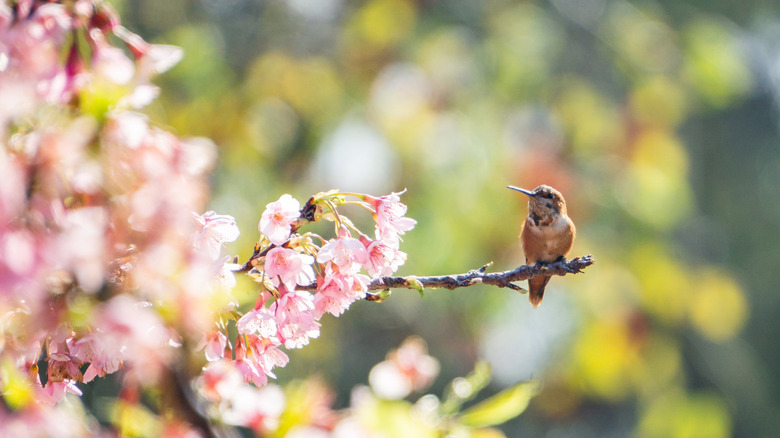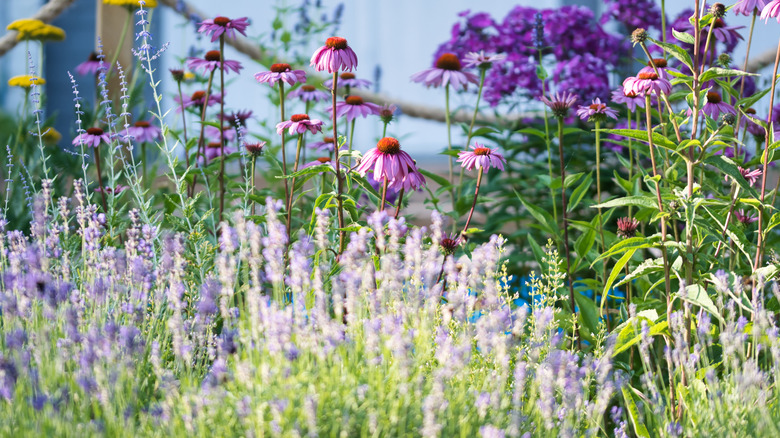Want More Hummingbirds Next Summer? Plant These Two Perennials Together In October
With a reprieve from the heat of summer, fall is a great time to plant perennials. Those of us hoping to increase the bounty of our gardens for hummingbirds and other pollinators will want to take advantage of the autumn planting season since some garden nurseries offer discounts at this time of year. When scanning the shelves of your local nursery in October, keep a lookout for catmint (Nepeta spp.) and coneflowers (Echinacea purpurea), which are among the beautiful perennials that hummingbirds love. Plant this pair together now, and you'll be able to delight in more hummers visiting your garden to feast on the gorgeous flowers next year.
If you've already added salvia and dianthus together for a hummingbird-filled garden in spring, you might want to add catmint and coneflowers to draw in more of these pollinating birds in summer, too. Hummingbirds love both of these flowers – and since these two perennials grow in the same conditions, they'll make a dynamic duo for attracting those showy pollinators to your yard next summer. And with the cooler weather of fall making transplanting easier on plants, October may be the perfect time to plant catmint and coneflowers in your garden, depending on where you live.
Who should plant catmint and coneflowers this fall for next year's hummingbirds
Gardeners in USDA Hardiness Zones 3 through 8 can grow catmint and purple coneflowers together as perennials for blooms next summer. However, for autumn plantings, gardeners should make sure there's plenty of time for these two plants to get established before winter weather arrives. Before you dig those holes, check that planting in October will give these hummingbird-attracting plants around a month to settle in before the soil freezes.
If you decide to plant catnip and coneflowers together in October, check your growing conditions. This perennial pair prefers well-draining clay, loam, sandy, or rocky soils. Although purple coneflowers can thrive in partial shade or full sun, catmint prefers lots of sunshine, so be sure to situate them in a location where they will get at least 6 hours of direct sunlight daily. While you wait for these two colorful summer bloomers to get established, you might consider adding an autumn bloomer like redbirds-in-a-tree (Scrophularia macrantha) to keep more hummingbirds coming to your yard through fall.

